Your feet are never passive. They either stand, slide, roll to half-toe, or push off the floor. The supporting foot takes your weight and tells you when to move. The free foot leads the free leg to its position. Your feet have brains. Use them


Your feet are never passive. They either stand, slide, roll to half-toe, or push off the floor. The supporting foot takes your weight and tells you when to move. The free foot leads the free leg to its position. Your feet have brains. Use them
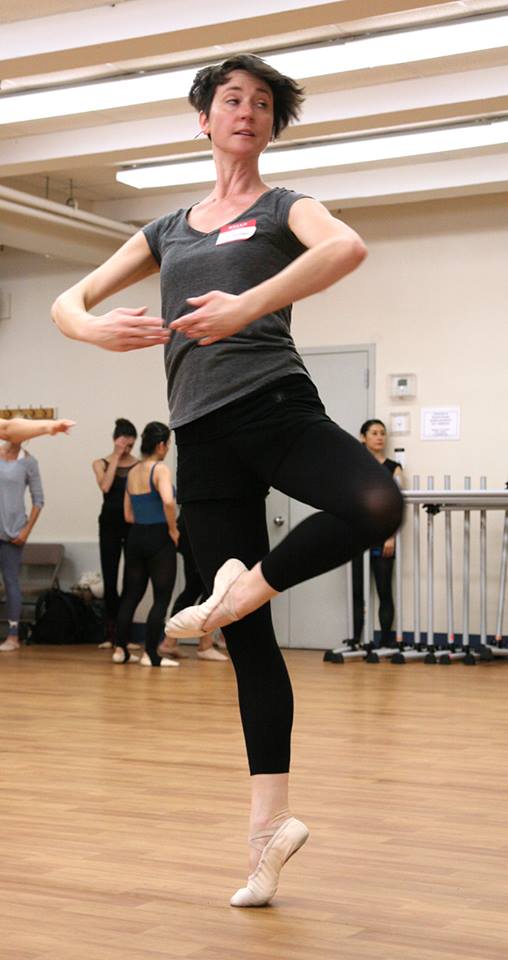
More about practicing the pirouette en dehors in promenade –
Remember that you always have a “back shoulder.” You can’t have both shoulders moving in the same direction at the same time, because this puts too much weight on one side of your body. It will make you lose your balance. Even though you will be bringing your left arm to first position as you promenade and turn, you must not move your left shoulder forward. You must keep your left shoulder “back” and over your left toes.
Sometimes I describe this as “the rule of one”—when turning, you should only move one shoulder or arm at a time. In this case, first you move your left shoulder and arm back as you lower into plié and then you move your right shoulder and arm back as you turn the plié.
Think of it this way: first you move this shoulder, and then you move the other. Only move one shoulder at a time.
Excerpted from my book “The Finis Jhung Ballet Technique: A Guide for Teachers & Students”
https://finisjhung.com/shop/guidebook/
Pictured: Belle McDonagh of The Elancé Adult Ballet School, Victoria, AU at the FJ Teacher Workshop 2015 (photo by Stephen von der Launitz)
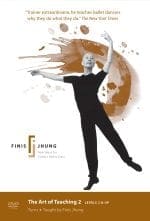
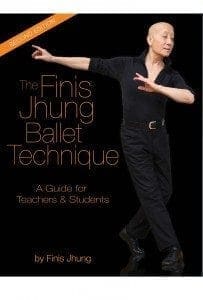 Practice the pirouette en dehors slowly with a promenade:
Practice the pirouette en dehors slowly with a promenade:
It requires a great deal of patience to teach students to go to “the end of the plié,” but in the end, it’ll be worth it. As I tell my students, “You either know how to turn, or you don’t—it’s not the weather, it’s not the music, it’s not what you’re wearing or how you feel today: it’s you. You must learn to do your preparation correctly!”
I want to point out that although you begin this preparation facing the mirror in a fourth position, when you turn to “the end of the plié,” you will arrive in a second position on the diagonal (écarté) with your weight over your front foot—with your left arm and knee pointing to corner 8 and your right arm and knee pointing to corner 4.
Your feet have changed from fourth to second; therefore, your arms must also change from fourth to second. Having your arms reaching out in second helps you to balance the final moments of the plié.
Turning your right shoulder and arm to the back while keeping your left arm and shoulder in place marks the crucial moment. Will you see and make “the end of the plié” with both arms stretched open? Your arms must allow your feet and legs to get to “the end of the plié.” Pulling your arms into the finished position before you complete the plié will pull your weight up and away from your supporting toes and put you off balance. This is what makes those dancers we mentioned earlier look like they’re dancing “on top of the floor.”
In fact, this is one of the clues you look for when studying your turns in the mirror. If you are in plié, your arms can’t be closing. Your arms do what your legs do. If both legs are apart and open, so are your arms.
After you see “the end of the plié,” push the floor with both feet, bring your free foot to your knee, your arms to first position, and complete the promenade to the front.
If you make sure that you look for “the end of the plié” each time you turn, then you won’t develop the bad habit of completing your arm movements faster than you can complete your plié preparation.
(Excerpt from my book “The Finis Jhung Ballet Technique: A Guide for Teachers & Students.”)
 This exercise is shown and explained in my video “The Art of Teaching Turns” https://finisjhung.com/shop/the-art-of-teaching-turns/
This exercise is shown and explained in my video “The Art of Teaching Turns” https://finisjhung.com/shop/the-art-of-teaching-turns/
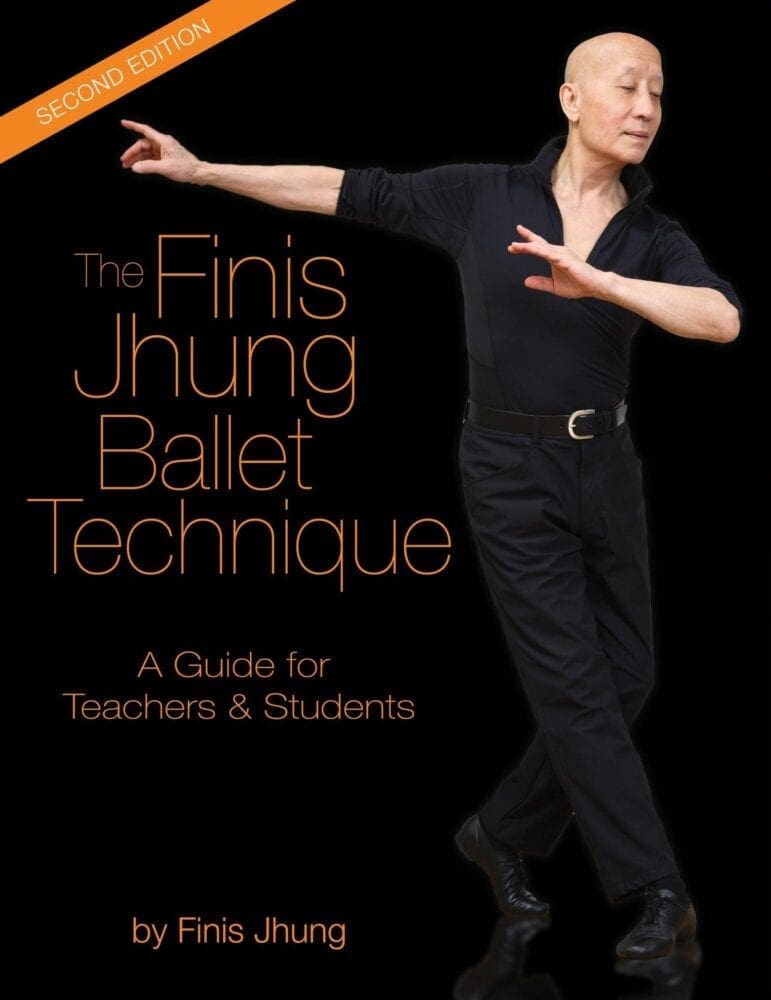
In almost every class I teach, I find myself reminding my students “Don’t be in such a hurry to fall over,” or “Remember, you can’t turn faster than you can fall!”
What I mean is that they should slow down the closing of their arms and make sure that they go to “the end of the plié.” If students don’t know how to make an almost-isometric plié, their feet and legs are relaxed. Not having a muscular connection from the supporting toe to the supporting hip, students are forced to pull up out of the plié. They lift their bodies up by pulling their arms in. They depend on the inward closing movement of the supporting arm. When I see students do this, they look very tense and appear to be dancing “on top of the floor.” They look like they’re following their arms, because all of their energy and weight is in their arms instead of in their supporting legs and feet.
Excerpted from my book “The Finis Jhung Ballet Technique: A Guide for Teachers & Students”

Every movement you make should be powered by the action of your feet (or foot). In terms of preparing for the pirouette en dehors from the fourth position, keep the following in mind:
 Excerpted from my book The Finis Jhung Ballet Technique: A Guide for Teachers & Students
Excerpted from my book The Finis Jhung Ballet Technique: A Guide for Teachers & Students
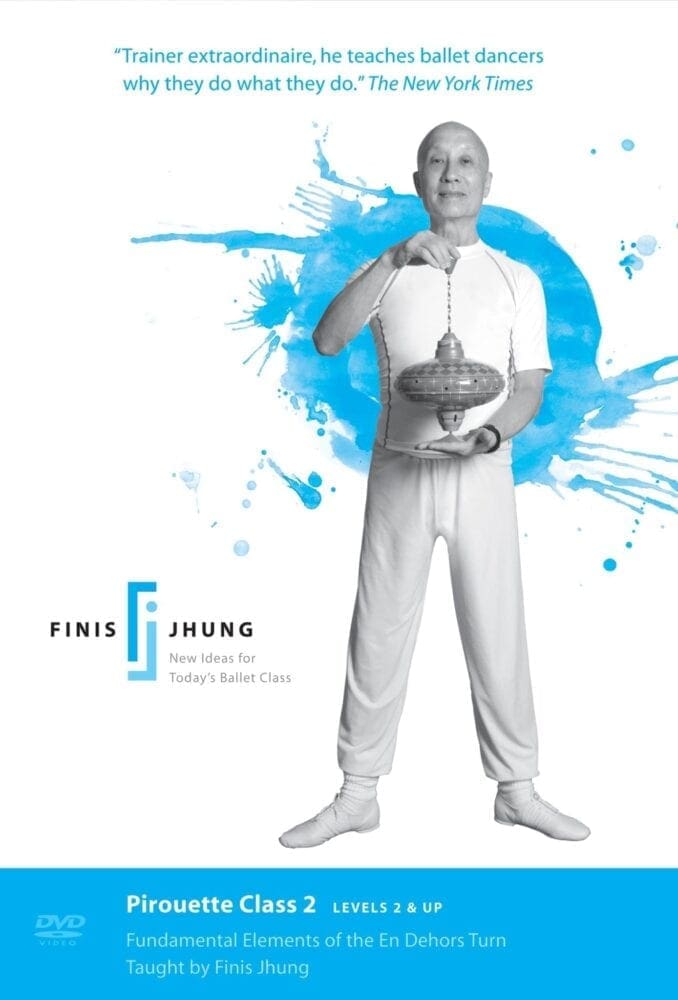
 Pirouette Reminder: When you pirouette from fourth position, and you stop and hold the plié, make sure you “double the plié”—release it a bit and give that supporting knee a second push PAST the supporting toes. This will make sure you don’t pull up and fall away from your supporting toes and, instead, enable you to drive your weight down into the floor for a well-balanced pirouette. Check out all the component parts in my instructional video “Pirouette Class 2.”
Pirouette Reminder: When you pirouette from fourth position, and you stop and hold the plié, make sure you “double the plié”—release it a bit and give that supporting knee a second push PAST the supporting toes. This will make sure you don’t pull up and fall away from your supporting toes and, instead, enable you to drive your weight down into the floor for a well-balanced pirouette. Check out all the component parts in my instructional video “Pirouette Class 2.”

 Why do we demi-plié? In order to spring up on half-toe or jump, and then to lower ourselves to the starting position. When you make a deep demi-plié with feet and legs relaxed you must then pull up out of the plié which will tend to set you back on your heels, make you fall off your turns, and lessen your elevation. You don’t need—or want—a deep, relaxed demi-plié—but you do need strong feet and ankles. Every movement we make comes from the floor. It begins with our toes and ends with our toes. In order to strengthen your feet and ankles, try to initiate your movements with an almost-isometric plié. I say “almost” because if it were simply isometric you would not move at all. Almost-isometric means that you move quietly and steadily with steely strength and intense opposition. The upward energy through the back of your neck equals the downward energy in your toes, feet, and ankles. Here’s how to learn what the almost-isometric plié feels like: Flatten both hands. Place one atop the other, palms down, fingers in opposite directions. Curl your fingers over each other. Grip strongly and pull as hard as you can without uncurling the fingers. Can you feel the muscles working in your fingers, hands, arms and shoulders? Now do this with your feet and legs. Stand in first position, grip the floor with toes curled and arches domed—you will feel your ankles tense—and slowly pull your knees into a small demi-plié. Resist the downward movement by stretching the back of your neck, keeping your hips as far from the floor as possible. The plié is minimal. Don’t lift your heels. You should feel a line of muscular engagement from your toes all the way up to your hips. Don’t think position; think power. Now you are ready to relevé: quickly press the balls of your feet against the floor, flatten your toes, and spring up to the half-toe. Keep driving your weight down through the floor until your legs are straight. Keep pushing your insteps over your spread toes. You should balance easily as long as you are in “Number 1” (correct posture). Try this with battement fondu en croix. Try it with a pirouette en dehors from both fifth and fourth positions. Yes, I know it is not in the ballet books. But we haven’t always had TV, the internet, and hip and knee replacements. Times have changed. So should you. This is explained in detail in my instructional video “Ballet Barre for the Adult Absolute Beginner” which is available on my website and Amazon.
Why do we demi-plié? In order to spring up on half-toe or jump, and then to lower ourselves to the starting position. When you make a deep demi-plié with feet and legs relaxed you must then pull up out of the plié which will tend to set you back on your heels, make you fall off your turns, and lessen your elevation. You don’t need—or want—a deep, relaxed demi-plié—but you do need strong feet and ankles. Every movement we make comes from the floor. It begins with our toes and ends with our toes. In order to strengthen your feet and ankles, try to initiate your movements with an almost-isometric plié. I say “almost” because if it were simply isometric you would not move at all. Almost-isometric means that you move quietly and steadily with steely strength and intense opposition. The upward energy through the back of your neck equals the downward energy in your toes, feet, and ankles. Here’s how to learn what the almost-isometric plié feels like: Flatten both hands. Place one atop the other, palms down, fingers in opposite directions. Curl your fingers over each other. Grip strongly and pull as hard as you can without uncurling the fingers. Can you feel the muscles working in your fingers, hands, arms and shoulders? Now do this with your feet and legs. Stand in first position, grip the floor with toes curled and arches domed—you will feel your ankles tense—and slowly pull your knees into a small demi-plié. Resist the downward movement by stretching the back of your neck, keeping your hips as far from the floor as possible. The plié is minimal. Don’t lift your heels. You should feel a line of muscular engagement from your toes all the way up to your hips. Don’t think position; think power. Now you are ready to relevé: quickly press the balls of your feet against the floor, flatten your toes, and spring up to the half-toe. Keep driving your weight down through the floor until your legs are straight. Keep pushing your insteps over your spread toes. You should balance easily as long as you are in “Number 1” (correct posture). Try this with battement fondu en croix. Try it with a pirouette en dehors from both fifth and fourth positions. Yes, I know it is not in the ballet books. But we haven’t always had TV, the internet, and hip and knee replacements. Times have changed. So should you. This is explained in detail in my instructional video “Ballet Barre for the Adult Absolute Beginner” which is available on my website and Amazon.

Many students have trouble finding their balance when they piqué in first arabesque. This is the third blog in a series of excerpts from my Guidebook on how to make this all-important step look better.
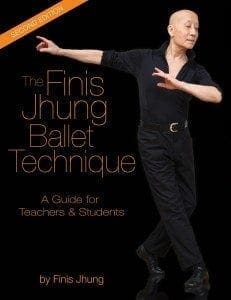 #3 Ears back!
#3 Ears back!
This is an abbreviated command. Since you are moving forward, you must have opposition of weight and movement in order to balance your piqué in first arabesque. Therefore, keep your ears and shoulders back. Most importantly, find your balance by sending energy down through your standing leg and out through your back shoulder and arm. Remember that only your toes and hips move forward. The succession of movement is this: toes, hips, chest, shoulders, arms, and head. Your ears stay back until the last moment. (Excerpted from “The Finis Jhung Ballet Technique: A Guide for Teachers & Students. Page 274.)

Piqué en Arabesque #2
Many students have trouble finding their balance when they piqué in first arabesque. This is the second blog in a series of excerpts from my Guidebook on how to make this all-important step look better.
#2. Walking down the stairs
When you piqué, imagine that you are going down the stairs. On your way down, you don’t lean forward because you will fall. You keep your ears up and your shoulders back. You reach downward for each step with your foot forward and leg extended. After you have placed your foot on the step, you rest momentarily. Use the same principles when you piqué. You may look like you are stepping “up” on your leg when you piqué, but actually you are always stepping down. (Excerpted from “The Finis Jhung Ballet Technique: A Guide for Teachers & Students. Page 274.) https://finisjhung.com/shop/guidebook/

Piqué en Arabesque
Many students have trouble finding their balance when they piqué in first arabesque. In the next few blogs, I will present different ideas on how to make this all-important step look better.
1. Reach out, step over, and push down
Whenever you piqué, whether it’s to a simple pose or a turning pose, always reach your piqué foot and step as far from your back leg as possible. Good dancers, especially those working on pointe, always “show their leg” before they piqué arabesque. You should see your long straight leg with a strongly pointed foot reaching out before you stand on it. Some dancers make a “scooping” movement when they piqué arabesque. As they fondu, they lean forward and let their hips drop back. Instead of reaching out and over and pushing down, they lean forward and piqué with a bent knee. Then they jerk their arms and arabesque legs upward and hold their breath while they try to balance. It looks like they are struggling. That is because they are. I tell my students, “You look like what you do.” If you work correctly, your balance is automatic and effortless. If you work incorrectly, you fight for your balance or miss it completely, and we notice it. For fun and learning, ask your students to bring their dance bags to the center floor. Have them practice their piqué arabesque by stepping over their own bag. This will teach them to keep their ears and shoulders back and not lean forward. It will teach them how to “show their legs” and find an easy balance. (Excerpted from “The Finis Jhung Ballet Technique: A Guide for Teachers & Students. Page 274.) https://finisjhung.com/shop/guidebook/